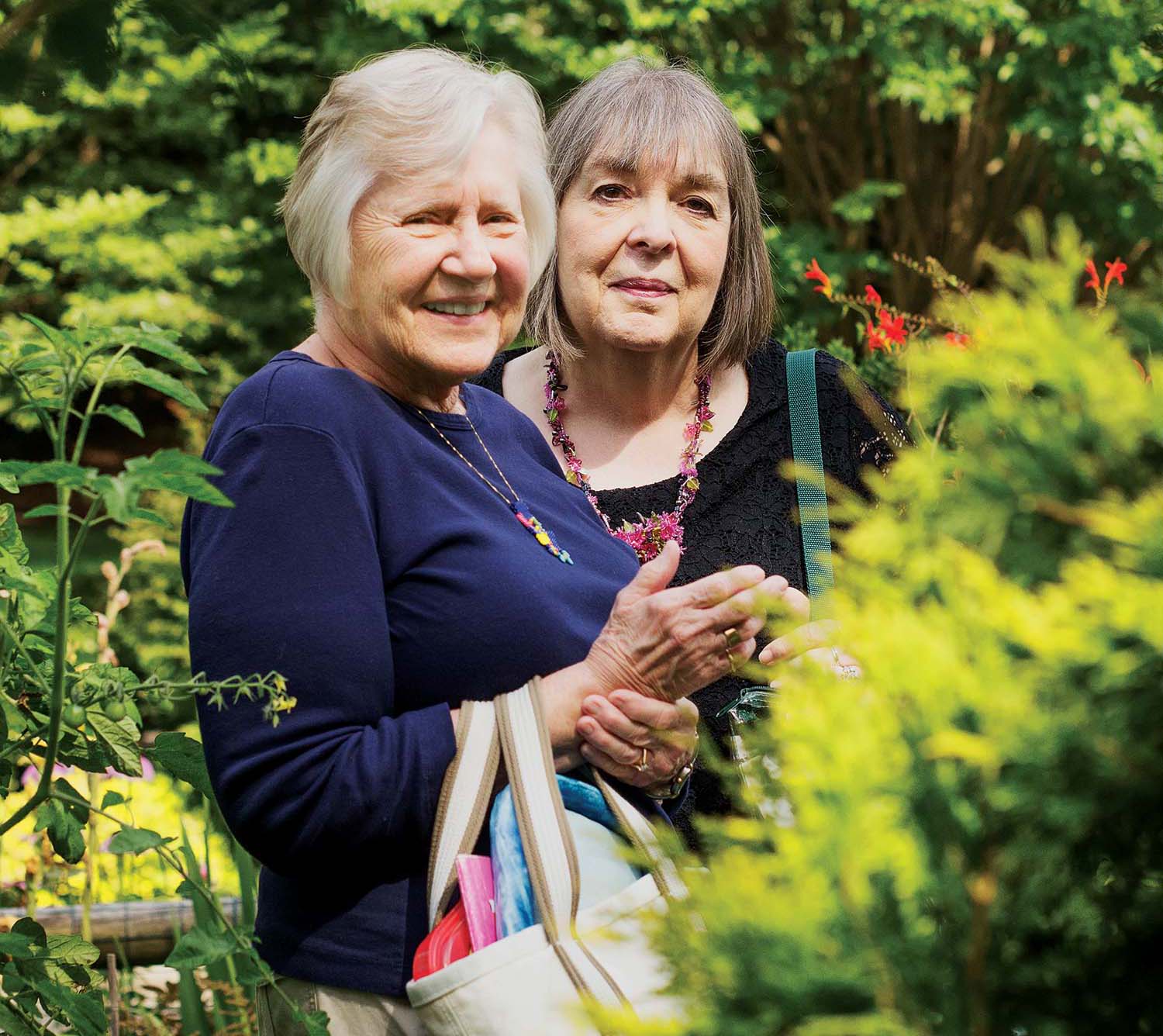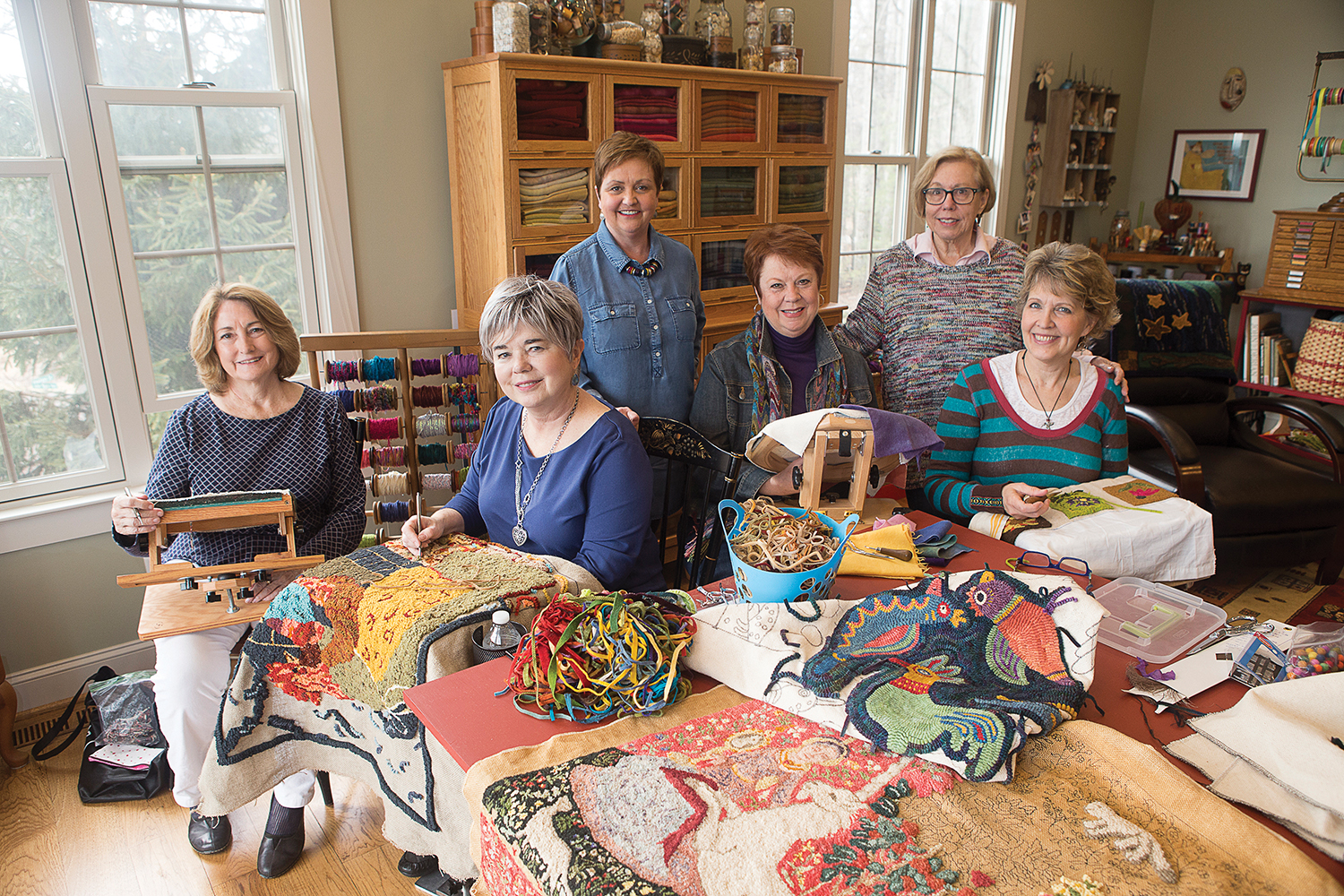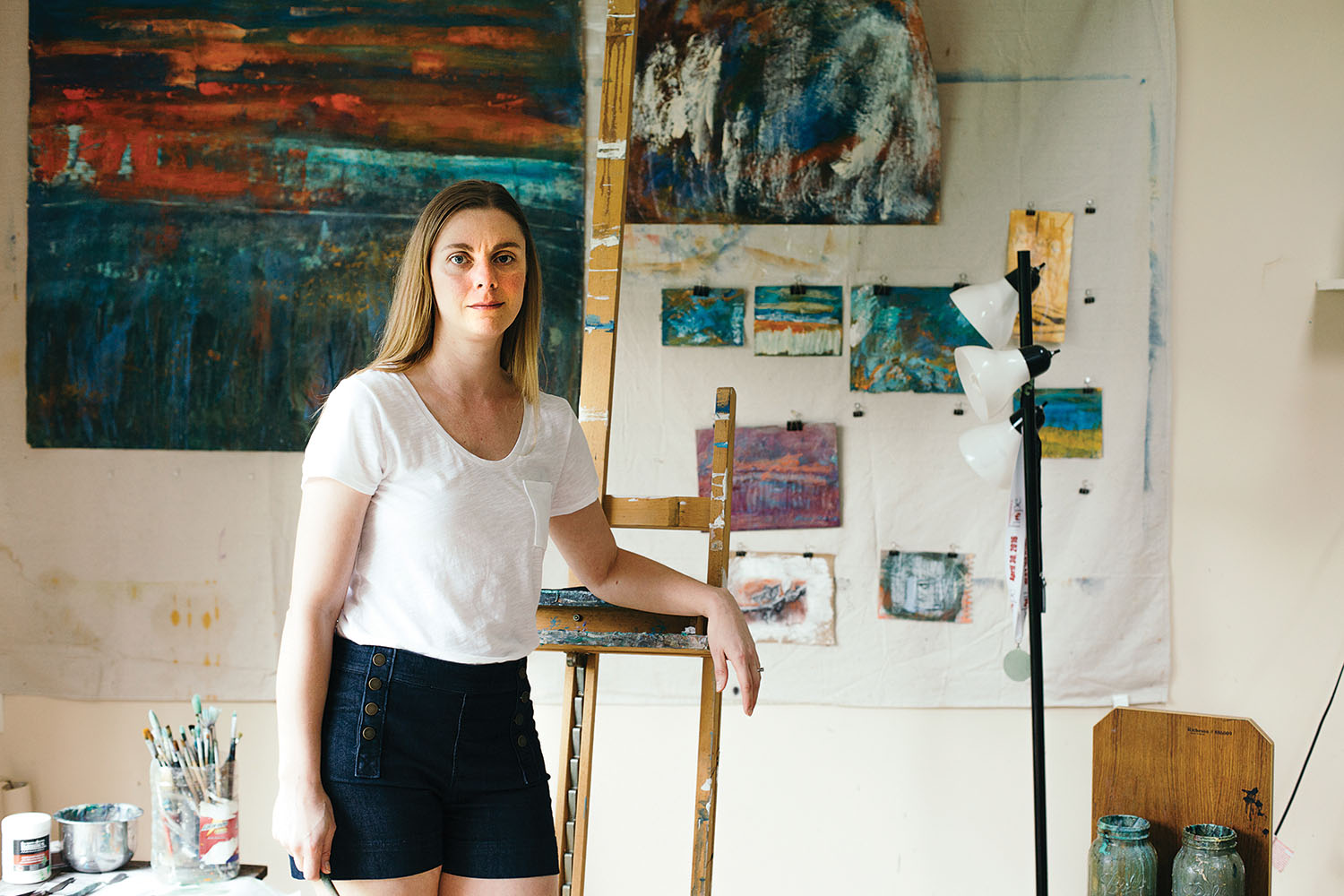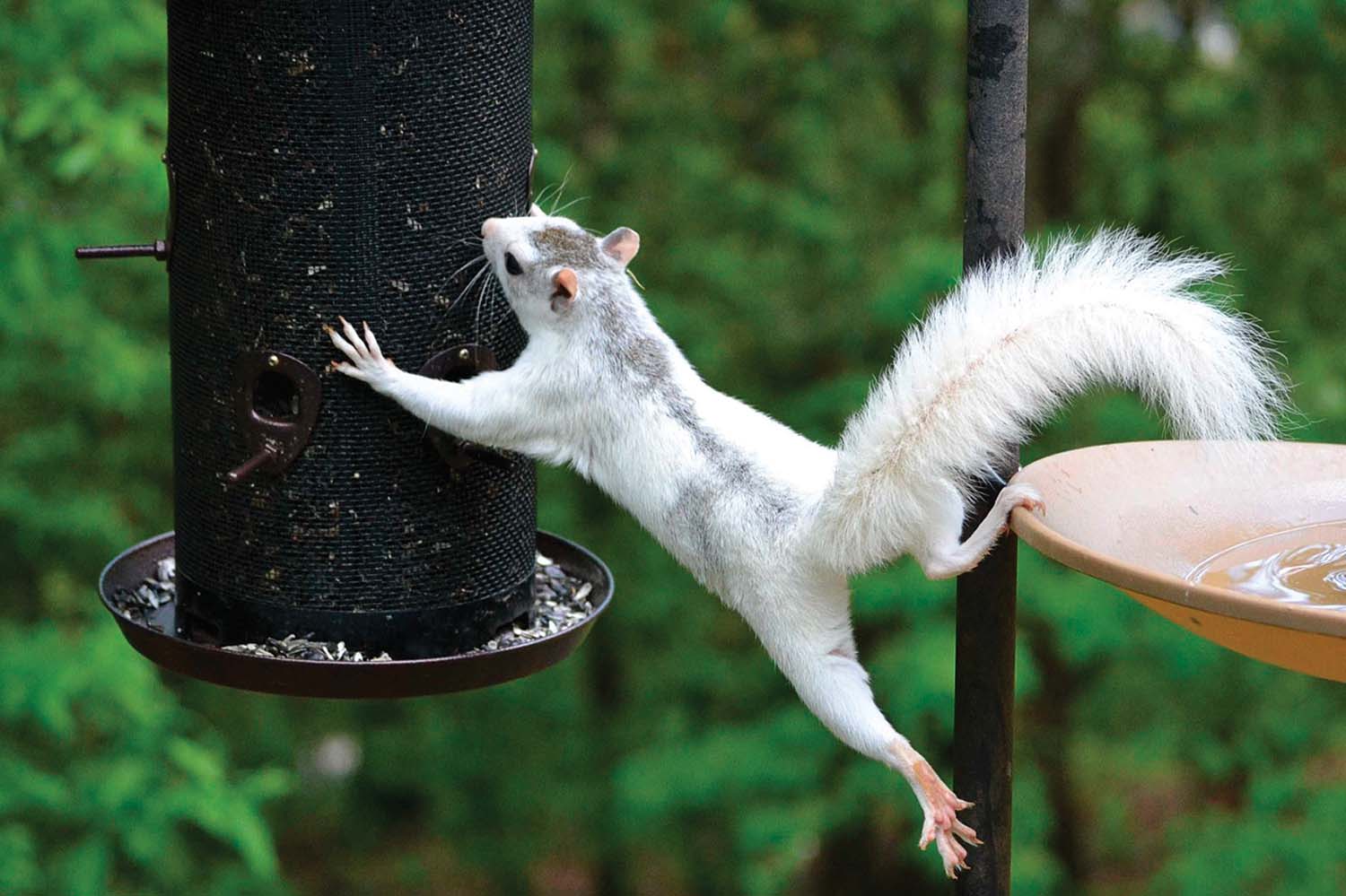
Sue Osterberg and Rosemary Kostansek keep the life of embroidery alive. Photo by Rimas Zailskas
Stitchery never stops. A national touring exhibit, Through the Needle’s Eye, launches this month in Brevard, pauses in town till September, then will go on the road until 2020: a decidedly futuristic-sounding date. The show’s been happening every few years since 1962, says its local ambassador, Rosemary Kostansek of Fairview. Next year, the event’s sponsoring nonprofit, the national Embroiderers’ Guild of America, founded in 1958, will celebrate its diamond jubilee.
It’s an impressive-sounding anniversary. However, needlework is ancient. By the time the EGA was founded, the art form was already so embedded in our cultural fabric it was being politicized. Rose Wilder Lane, in her 1963 retrospective Woman’s Day Book of American Needlework, “interpreted needlepoint as an expression of American freedom,” says author Christine Woodside.
Lane wrote in nearly every genre, but remains best known as the secret editor of her mother Laura Ingalls Wilder’s famous Little House on the Prairie series for children, beginning in 1932. In her own recent book, Libertarians on the Prairie, Woodside reveals the depth of Lane’s not-so-secret political views. When she wasn’t slyly contouring her mother’s simple novels with expressions of free-market optimism or publishing her own explicitly Libertarian manifestos, Lane stitched her ideas into some unlikely formats, including the Woman’s Day compilation.
The way Lane saw it, it was only in the U.S. that lower- and upper-class women were not restricted to sewing patterns denoting their respective stations in life, as in old-world Europe: “Each human is a self-governing source … [and] American women were the first to reverse the old meaning in needlework design,” wrote Lane.
“The book is an important resource of significant folk-art forms,” notes Canadian knitter Ellen Mallett, who owns a vintage copy. “Many of the patterns are uniquely American.”
If she were alive today, Lane would likely approve of Subversive Cross Stitch, the 2015 book that captured a blazing trend: modern makers who customize classic forms with edgy words. Old-school-style samplers are embroidered with mottoes like “Home is Where the Vodka Is,” “Hell is Other People,” and other, more blush-worthy messages.

A beaded figure by Rosemary Kostansek. Photo by Rimas Zailskas
The edgy-stitchery trend is “certainly interesting,” says Kostansek. She even admits she briefly had a copy of Subversive Cross Stitch. But the trend isn’t appropriate for the Embroiderers’ Guild of America: with this crew, it’s about education and heritage.
“Our mission is to inspire passion for the needle arts,” says Kostansek, before listing the variety of forms included in Through the Needle’s Eye: the show exhibits high-end work in silk and metal, mixed media, quilting, fabric manipulation, beading, jewelry — “the commonality is using a needle with an eye to produce the work.”
Sue Osterberg of Hendersonville uses her own needle for off-loom bead weaving, a meticulous handcraft she discovered through the local Laurel Chapter (a subset of the Carolinas Region EGA group). She began her beading journey in 1999, and points out that a woven bead cloak worn by Queen Puabi circa 2,500 BCE is on view at the University of Pennsylvania Museum of Archaeology and Anthropology. It’s a comforting perspective, since it can take years to achieve the six levels of Master Craftsman status in beading, a program the EGA offers for various disciplines. Osterberg’s level-five submission for the Needle’s Eye show is a recreation of Fisher-Price’s classic Rock-a-Stack toy.

Sue Osterberg’s level-five submission for the Needle’s Eye show is a recreation of Fisher-Price’s classic Rock-a-Stack toy. Photo by Tim Barnwell
She describes the daunting technical aspects required of a work at this stage of the master journey, including adhering to specific mathematical dimensions, elevating the structure without using an armature, and handling appallingly tiny raw material: “seed beads” that can’t be larger than three millimeters. When her beaded birdhouse didn’t work out, collapsing under the weight of its elaborate roof, Osterberg went the campy nostalgia route with the Fisher-Price replica. She calls her piece “Child’s Play,” but the attention span required for its execution was hardly immature: it took the artist 140 hours of beading time to complete.
Needlework polemicist Rose Wilder Lane revered a strong work ethic. She was a maverick in mid-20th-century America, an outspoken, education-championing activist who probably would have appreciated a subversive cross-stitch sampler (Pinterest examples such as “I Am Silently Correcting Your Grammar” or “Classy, Sassy, and a Bit Smart Assy” would have fit the headstrong editor). But being raised by a pioneer mother, she was also a big believer in the pride of a hard job completed — whether one’s work was homesteading, writing, politicking, or crafting an artistic legacy one stitch at a time.
Master-level beadwork “has taught me patience and perseverance,” says Osterberg. “It’s my sanctuary — and I go to that sanctuary almost daily.”
The Embroiderers’ Guild of America hosts its 21st Annual Through the Needle’s Eye national traveling exhibit at Transylvania Community Arts Council (349 South Caldwell St., downtown Brevard). The show opens Wednesday, August 16 and runs through Friday, September 15. For more information, call 828-884-2787 or see tcarts.org (The Carolinas Region of the EGA will hold its annual convention, “Blue Ridge Rendezvous,” in Asheville at the Crowne Plaza Resort August 16-20. www.egausa.org.)



